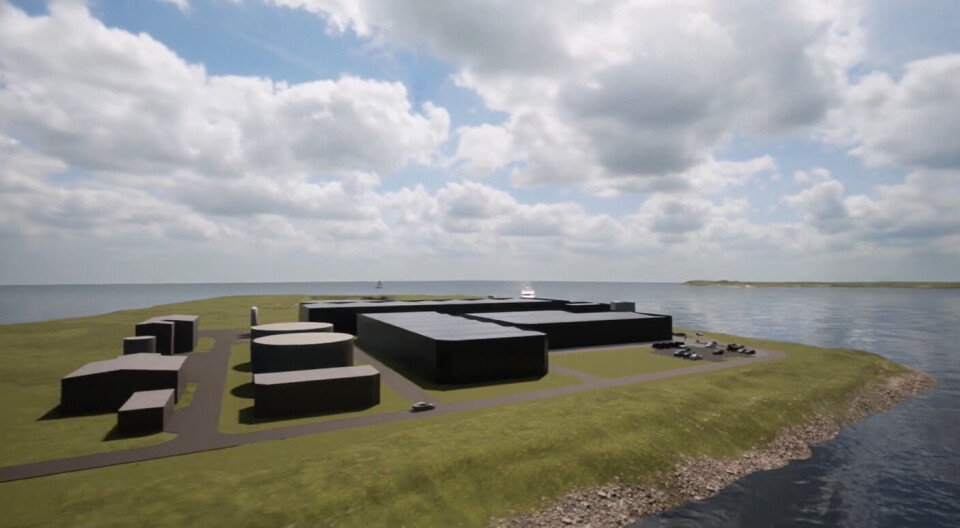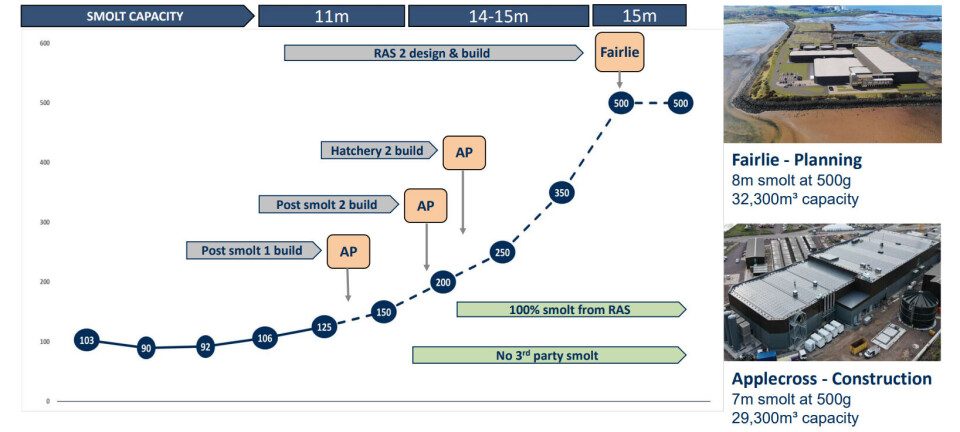
Bakkafrost bids to beat the Scottish summertime blues
70% of this year’s harvest will be carried out before most challenging period
Salmon farmer Bakkafrost Scotland will harvest around three-quarters of its 2024 volume by the end of June in a bid to avoid the biological and environmental problems it and other Scottish salmon producers have encountered in the second halves of the past two or three years.
The Faroese-owned fish farmer is guiding for an annual harvest of 25,000 gutted weight tonnes this year and aims to get off to a strong start after postponing some harvesting from Q4 2023 until H1 2024, a move which limited its Q4 2023 harvest to 1,062 gwt and contributed to a low 2023 harvest to 20,598 gwt.
Bakkafrost Scotland plans to harvest more than 6,000 gwt in the current quarter, and 11,000 gwt in Q2, leaving just over 7,000 gwt to be harvested in H2.
“The salmon farming industry in Scotland has suffered from major problems in recent years mainly because of micro-jellyfish and other factors that damage the gill health of the fish. However, Bakkafrost’s farming operation has seen better biology since mid-September 2023, resulting in lower mortality,” the company said in its report for Q4 2023, published today.
Low lice levels
It said increased freshwater dual treatment capacity – a freshwater bath and FLS delouser on board the 4,000m³ wellboat Ronja Star - was a key factor in improving fish gill health while also keeping sea lice levels at a record low.
This had reduced the potential impact of the biological challenges during Q4 2023, enabling it to leverage the improved biological development by minimising Q4 2023 harvest volume to allow fish to grow larger for harvest at higher weights and value in 2024.
“In order to address the biological risks, Bakkafrost has made strategic adjustments to its short-term plans and production strategy for the Scottish farming operation,” wrote the company.
It intends to mitigate risks by stocking 200g-plus smolts from its Applecross hatchery, which it has evaluated to be more suitable than smolts from external sources.

“Consequently, Applecross will supply nearly all of the required smolt to the marine sites in 2024,” said Bakkafrost. “Some farming sites may not be restocked or remain productive during Q3 until the risks have been mitigated through the use of large, high-quality smolt.
Reducing risk
“This approach will reduce the biomass at risk in Q3 and result in around 75% of the 2024 harvest volume being harvested in the first half of the year.”
Bakkafrost believes its increasing capacity to produce large smolts will enable it to increase its harvest in Scotland to 45,000 gwt in 2026 and 55,000 gwt by 2028.
This year, it intends to stock 9.1 million 200g-plus smolts produced at its Applecross hatchery, where it plans two further phases of expansion to take capacity up to 7 million smolts at 500g. The company also plans a second large facility at Fairlie in Ayrshire, where it will produce 8m smolts at 500g annually.
In the Faroes, Bakkafrost expects to increase its harvest volume from 52,408 gwt last year to 66,000 gwt in 2024, 95,000 gwt in 2026, and 110,000 gwt in 2028.
It already has the capacity to produce 18 smolts at 500g at four hatcheries in the Faroes and is building a new hatchery at Skálavík which will have a capacity of 3,500 tonnes, the same as Applecross. When the build is completed in late 2026, Bakkafrost will have a capacity to grow more than 24 million smolts at 500g in the Faroes.
The company is planning capital investment of DKK 6.3 billion (£723.3m) between 2024 and 2028, with a roughly equal split between Scotland and the Faroes. Bakkafrost says the investment works out at DKK 14 per kilo harvested in Scotland and DKK 7 per kilo harvested in the Faroes.

Processing plant
Along with increased smolt capacity, the investments in Scotland will include a harvest and processing plant, site expansions, more vessel capacity for transport and treatment, and marine site development.
In the Faroes, Bakkafrost will spend money on increased feed capacity, including storage and logistics, optimisation of existing farming sites, organic growth in existing licences with new technology, improved vessel capacity, and energy transition. A plan to farm offshore has been postponed.
The Bakkafrost group made revenue of DKK 1.562bn in Q4, down from DKK 1.940bn in the same period in 2022. Revenues for the full year were DKK 7.141bn (2022: DKK 7.130bn).
Group operating profit in Q4 2023 was DKK 356m (DKK 376m) and was DKK 1.544bn (DKK 1.705bn) for the year.
Bakkafrost group made a profit of DKK 955m in 2023, down from DKK 1.344bn in 2022.
The Bakkafrost Faroes freshwater division made an operating profit of DKK 52m for Q4 (DKK 52m) and DKK 157m (DKK 188m) for the year. The farming division made an operating profit of DKK 64m (DKK 254m) for Q4 2023 and DKK 551m (DKK 1.515bn) for the year.
Bakkafrost Scotland’s freshwater division made an operating loss of DKK -9m (DKK -8m) for Q4 and an operating profit of DKK 9m (DKK -24m) for the year. The farming division made an operating loss of DKK -48m (DKK -170m) for Q4, and DKK -155m (DKK -226m) for the year.
Strong markets
“Bakkafrost delivered strong results in the fourth quarter 2023 with improved operating margin,” said chief executive Regin Jacobsen. “Markets have been strong, with high demand in all regions. Bakkafrost salmon was well appreciated with good premium in the market, especially strong development in North America, which increased to 25% of the salmon from Bakkafrost Faroe Islands.
“I am proud of the progress from the high focus on fish health and welfare in Bakkafrost’s operation in the Faroe Islands, which have resulted in a very robust and strong farming regime. The average monthly survivability for the full year was 99.39% with average harvest weight of 4.6 kg HOG and 90% superior grade. In Scotland our journey to robust operation is still in progress – last year the monthly survivability was 98.29% with average harvest weight of 4.2 kg HOG and 89% superior grade.
“After a troublesome third quarter in Scotland with biological challenges, the fourth quarter gave opportunities with good biological development to grow the fish, resulting therefore in reduced harvest volumes, concentrating on growing into H1 2024 to larger sizes.”























































